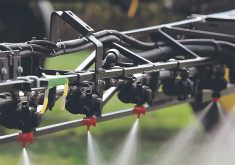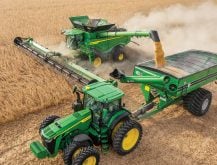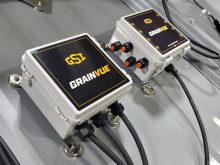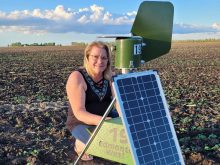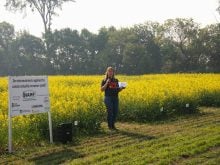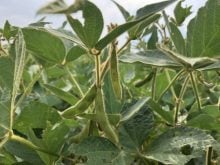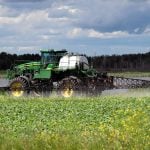FARGO, N.D. — Irrigation farmers have pumped fertility and crop protection through their pivots for decades. Most dryland farmers have come to depend on GPS for mechanical prescription application for about a decade.
But seeing a GPS unit at the end of an irrigation leg can prompt a person to scratch his head. By its very nature, the centre pivot is already a self-guiding agricultural implement. It knows its way around the field.
When it comes to knowing precisely where and how much product to apply to the field, the pivot also does a pretty good job of telling the controller exactly where it is. The rotating pivot clicks off the revolutions in precise degrees as it travels in identical circles. The controller then meters the correct dosage into the pipes so it’s sprayed on the correct zone.
Read Also
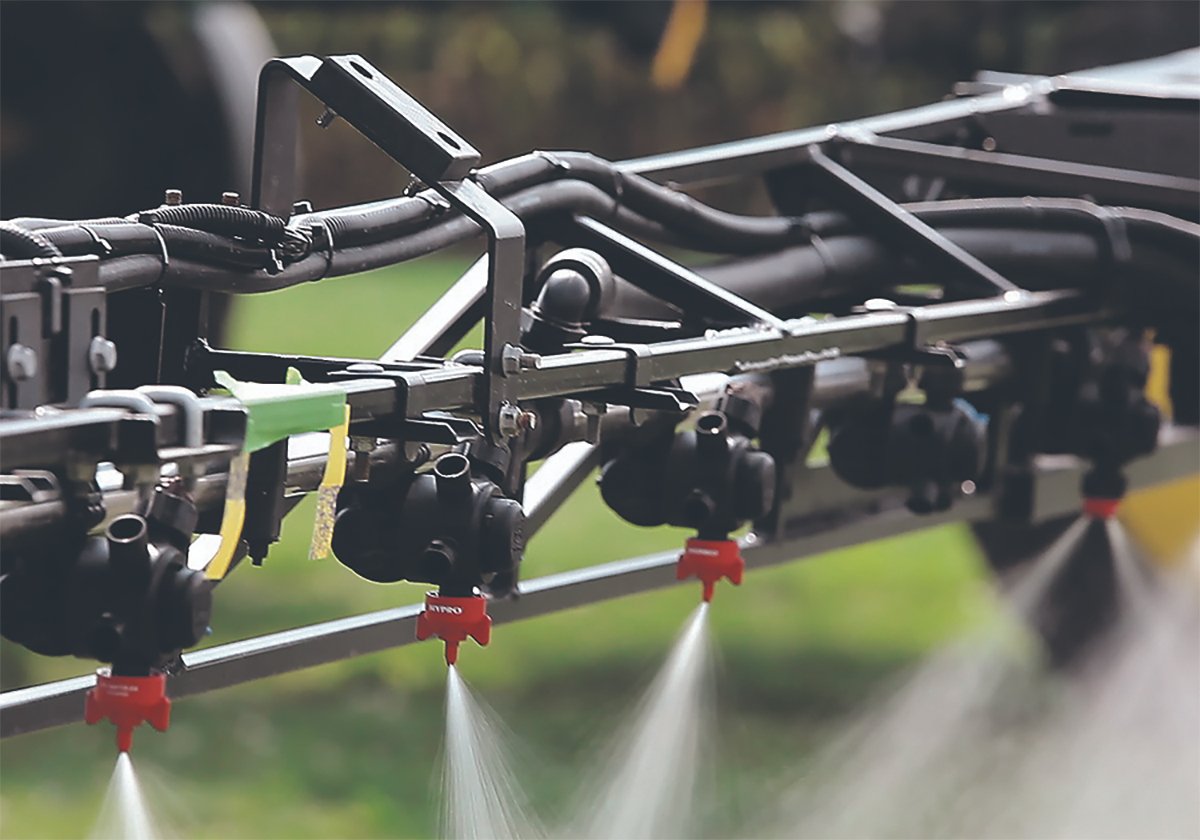
Ten years to study a pesticide? PMRA dealing with a backlog of post-market reviews
It should take two to four years to review the safety of a pesticide. But Health Canada and the Pest Management Regulatory Agency will take nine to 10 years to evaluate the safety of glufosinate — a herbicide that is already on the market.
So then, why does the pivot need GPS? It’s a question we posed to Chad Hoffman of Hoffman Irrigation in Oakes, N.D. Hoffman brought the end tower of an irrigation arm to the Big Iron show in Fargo earlier this year to show irrigation farmers that they stand a lot to gain by feeding the controller more accurate information from the Reinke Navigator GPS.
“This is basically just a more accurate way of telling you exactly where the end is. Otherwise you’re controlling the chemical injection only from the pivot centre,” said Hoffman.
“If you have a bow in the system or it’s out of align one way to the other, you don’t know it unless you want to sit with the system every time it’s running. But if you have GPS on the end tower, it relays its location to the control. Your panel at the pivot is still running the show. It’s doing all the controls. GPS just helps the panel be more accurate.”
He said Reinke has had GPS to turn the corner arms on and off for a long time. The technology to run product through the pivot has also been around forever, but the integration of GPS into irrigation has given a boost to the practice.
Variable rate irrigation uses custom field prescriptions to apply precise volumes of water to match variables in each field. Hoffman said that for the first time, stored data can be graphed and displayed in the field and then saved to a USB flash drive. A full month of data can be displayed for each of eight factors: water flow, water pressure, application, wind direction and speed, voltage, heat units, rainfall and temperature.
“It’s not expensive to install GPS on a new irrigation system. If you install our Navigator GPS or conventional mechanical switches, it’s the same amount of money. It’s a wash, so why wouldn’t you do it? But some guys are old school and they still want the mechanical switches. Too much technology, they say,” Hoffman said with a laugh.




